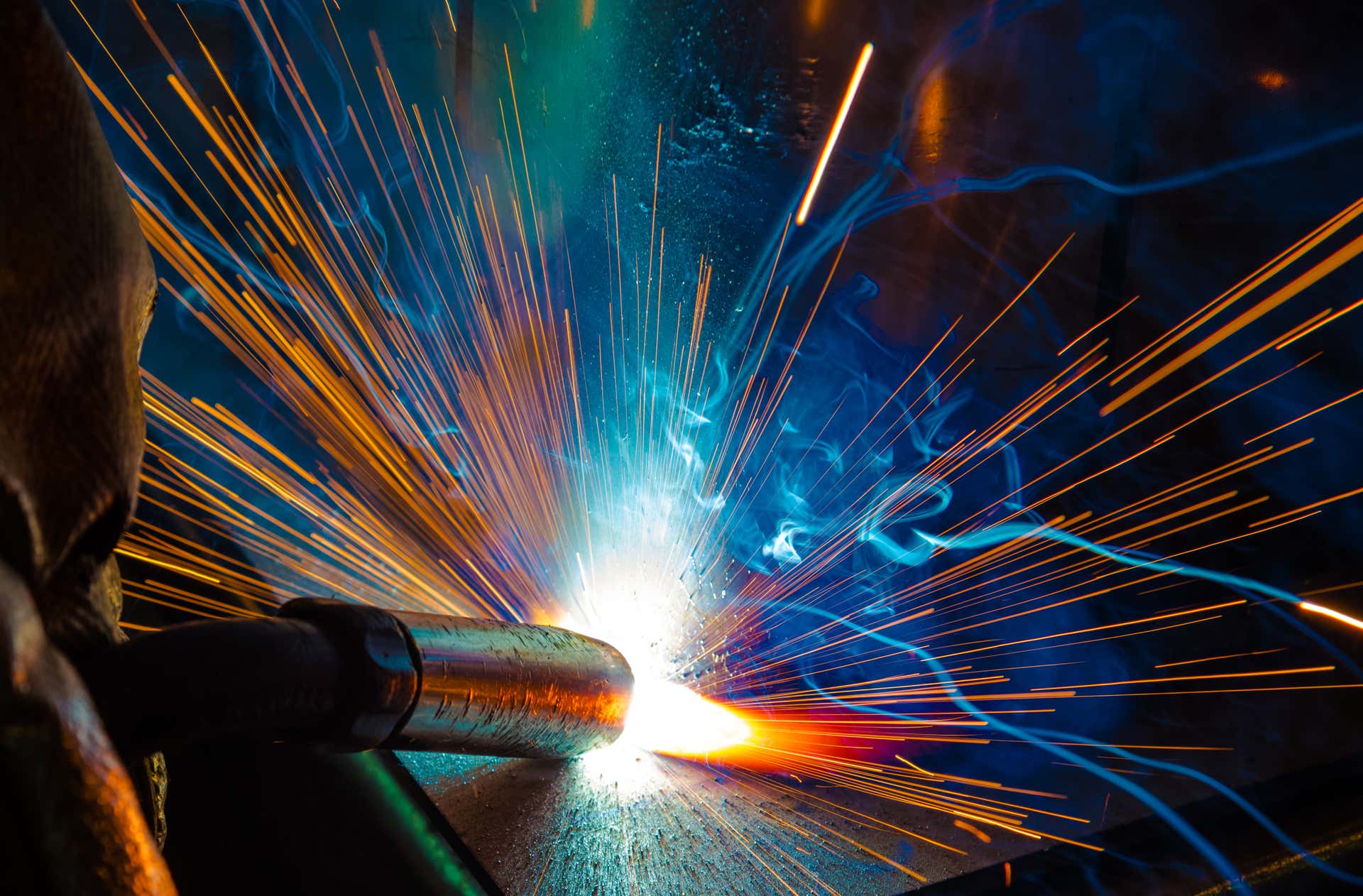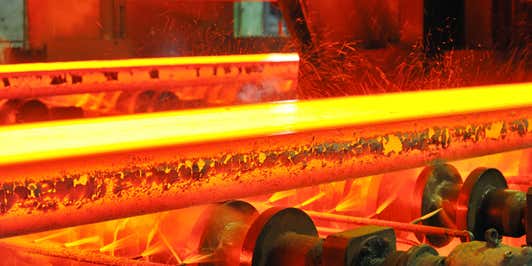
Analyse des métaux
Solutions d'analyse pour l'analyse des métaux et la fabrication d'alliages

Solutions d'analyse pour l'analyse des métaux et la fabrication d'alliages

Nous vous aidons à répondre à la demande, devenir plus durable et simplifier vos procédés, tout en les rendant plus respectueux de l'environnement et plus sûrs, grâce à des analyses qui vous permettront de trouver de nouvelles possibilités. Nos instruments de pointe, nos solutions automatisées, nos services et notre expertise vous aideront à mettre en place le contrôle de procédé et le contrôle qualité que vous souhaitez dans l'industrie des métaux, qu'il s'agisse de produits métalliques de première transformation ou de produits spéciaux.
Le contrôle de procédé et le contrôle qualité sont essentiels dans les industries du fer, de l'acier, de l'aluminium, du cuivre et du titane, où la cadence est élevée et où les délais sont courts. Les fabricants de produits métalliques doivent donc être en mesure d'analyser rapidement et précisément la structure, la taille et la forme des particules, ainsi que la densité de leurs produits chimiques, métaux et alliages.
De la bauxite à l'alumine et à l'aluminium, une surveillance rapide et précise des flux de matériaux est essentielle dans le procédé d'analyse de l'aluminium. En surveillant les paramètres pertinents relatifs aux procédés, les fabricants peuvent atteindre leurs objectifs commerciaux et maintenir l'efficacité des procédés tout en maîtrisant la transition vers la production de métaux sans émissions de CO2. Grâce aux solutions industrielles de Malvern Panalytical, vous pouvez analyser la composition minéralogique (Aeris Metals) et élémentaire (Axios FAST, édition Metals de Zetium), ainsi que la taille et la forme des particules (Mastersizer 3000). Vous pouvez également prédire directement les paramètres de procédé tels que l'alumine disponible dans la bauxite, les modifications structurelles de l'alumine, la composition du bain pendant la fusion de l'aluminium, ainsi que les impuretés, les contraintes et la texture de l'aluminium ou de ses alliages. Nos solutions se déploient sur une large gamme, des instruments d'analyse en temps réel (par exemple, l'analyseur sur bande transporteuse CNA, l'Epsilon Xflow et l'Insitec) aux laboratoires entièrement automatisés.
Une surveillance rapide et précise des flux de matériaux est obligatoire tout au long du procédé de fabrication du fer et de l'acier. Les fabricants doivent surveiller les paramètres pertinents relatifs aux procédés pour atteindre leurs objectifs commerciaux et maintenir l'efficacité des procédés tout en maîtrisant la transition vers la production d'acier sans émissions de CO2. Les solutions industrielles de Malvern Panalytical vous permettent d'analyser les matières premières, ainsi que les produits intermédiaires tels que l'aggloméré de fer, les granulés de minerais de fer et le préréduit, ou encore les produits finaux comme l'acier ou les alliages d'acier. Nos solutions permettent de surveiller la composition minéralogique (Aeris Metals) et élémentaire (Axios FAST, édition Metals de Zetium), ainsi que la taille et la forme des particules (Mastersizer 3000). Elles peuvent également permettre de prédire directement les paramètres de procédé, tels que la teneur en FeO, les paramètres physiques des composants frittés et des granulés, la métallisation et les impuretés, ainsi que les contraintes et la texture dans l'acier et les alliages d'acier. Nos solutions se déploient sur une large gamme, des instruments pour l'analyse en temps réel (par exemple, l'analyseur sur bande transporteuse CNA et l'Insitec) aux laboratoires entièrement automatisés.
Dans la mesure où les fabricants de métaux non ferreux travaillent à atteindre leurs objectifs commerciaux et à passer à la production de métaux sans émissions de CO2, une surveillance rapide et précise est essentielle dans leurs procédés de production. Des minerais aux alliages d'acier à base de cuivre, de nickel ou encore de zinc, une surveillance fréquente des différents flux de matériaux est essentielle pour garantir une efficacité maximale des procédés. Les solutions industrielles de Malvern Panalytical vous permettent d'analyser les matières premières, les produits intermédiaires tels que le lixiviat ou les liqueurs métalliques, ainsi que les produits finaux métalliques ou d'alliages métalliques. Nos solutions permettent de surveiller la composition minéralogique (Aeris Metals) et élémentaire (Axios FAST, édition Metals de Zetium), ainsi que la taille et la forme des particules (Mastersizer 3000). Elles peuvent également permettre de prédire directement les paramètres pertinents relatifs aux procédés, tels que l'efficacité de l'extraction par solvant et par voie électrolytique, la composition des laitiers, ainsi que les contraintes et la texture des métaux et des alliages métalliques. Nos solutions se déploient sur une large gamme, des instruments d'analyse en temps réel (par exemple, l'analyseur sur bande transporteuse CNA, l'Epsilon Xflow et l'Insitec) aux laboratoires entièrement automatisés.
Les fabricants de revêtements métalliques s'appuient sur une surveillance fréquente pendant le procédé de production pour atteindre leurs objectifs commerciaux et qualitatifs tout en optimisant l'efficacité du procédé. À mesure que l'industrie passe à la production de métaux sans émissions de CO2, cette analyse devient vraiment cruciale. Lors des différents procédés de revêtement, tels que la galvanisation ou le recuit après galvanisation, une surveillance rapide et précise pour garantir la qualité et l'efficacité du procédé est obligatoire. Les solutions industrielles de Malvern Panalytical permettent d'optimiser les procédés grâce à une analyse efficace, garantissant ainsi le respect des spécifications de qualité. Nos instruments permettent de surveiller la composition minéralogique et élémentaire des revêtements métalliques, avec des solutions allant de l'analyse en temps réel aux laboratoires entièrement automatisés.
La production constante de composants métalliques ou de produits aux propriétés correctes nécessite des matériaux d'entrée aux caractéristiques fiables et que vous pouvez cerner parfaitement. Pour les poudres métalliques, ces caractéristiques peuvent inclure des propriétés chimiques, morphologiques et microstructurelles qui doivent être mesurées à l'aide des techniques analytiques appropriées. La taille et la forme des particules sont des propriétés clés dans la plupart des procédés de poudres métalliques car elles ont un impact sur l'écoulement, le tassement, la porosité et la réactivité de la poudre, ainsi que la santé et la sécurité. Les propriétés chimiques sont également primordiales, en particulier pour la métallurgie des poudres et la fabrication d'additifs, dans lesquelles la poudre doit être conforme à la composition en alliage du matériau spécifié. La structure cristallographique peut également affecter les propriétés mécaniques et chimiques des poudres métalliques et des composants fabriqués.
Nos solutions clés pour la caractérisation des particules sont le Mastersizer et le Morphologi 4, qui sont des instruments de paillasse hautement automatisables. Pour les dispersions et les nanoparticules métalliques, notre gamme Zetasizer représente une solution plus appropriée.
Nos spectromètres de fluorescence X posés au sol (Zetium) et compacts (Epsilon) fournissent tous deux une analyse élémentaire, selon les exigences de l'application. Pour les études structurales et cristallographiques, la diffraction des rayons X (XRD, X-Ray Diffraction) est notre solution principale, disponible également sous forme de systèmes posés au sol (Empyrean) et compacts (Aeris).
Nous vivons une crise climatique de plus en plus alarmante et les métaux joueront un rôle clé dans la lutte contre cette crise. Face à ces défis et à ces opportunités, les fabricants de produits métalliques s'efforcent d'atteindre des objectifs environnementaux tels que l'acier sans émissions de CO2. Nos solutions innovantes de caractérisation des métaux appuient ces efforts, en vous permettant de surveiller attentivement vos matériaux et vos procédés, de favoriser l'efficacité, de limiter le gaspillage de matière et la consommation d'énergie, et de prévenir la contamination toxique.

La fabrication des métaux repose sur l'excellence de l'analyse, et la compréhension des propriétés minéralogiques et structurelles des matériaux est essentielle pour obtenir des résultats de haute qualité. Dans les procédés industriels à cadence élevée comme la production de fer, l'efficacité est essentielle, mais l'analyse structurelle s'est toujours appuyée sur des méthodes chimiques et physiques par voie humide. Or, ces dernières peuvent être lentes et laborieuses et ne sont pas bien adaptées à un environnement industriel au rythme élevé.
L'analyse par diffraction des rayons X (XRD) permet de résoudre ce problème en fournissant une prédiction directe des paramètres des procédés à une cadence beaucoup plus élevée que les techniques plus anciennes, et l'automatisation peut améliorer encore plus l'efficacité. Associée à l'analyse élémentaire, la solution XRD fournit des informations supplémentaires sur les flux de matériaux, permettant un contrôle de procédé plus fiable et ouvrant la voie vers une production plus durable.
XRD peut rendre l'industrie des métaux plus écologique grâce, entre autres, à son application dans la caractérisation du préréduit, qui jouera un rôle clé dans la production d'acier de l'avenir. Elle offre également une solution efficace pour la surveillance des bains électrolytiques pendant la production d'aluminium. Les diffractomètres à rayons X de laboratoire, tels que ceux de notre gamme Empyrean, sont souvent utilisés pour analyser l'austénite, les contraintes et la texture pendant la production d'acier.
Les éléments traces peuvent modifier les propriétés finales des métaux de manière imprévisible. Si les éléments traces ne sont pas surveillés et contrôlés, ils peuvent entraîner des défauts dans le produit fini, qui peuvent avoir des conséquences graves si une pièce métallique tombe en panne ou ne fonctionne pas de manière fiable. Pour cette raison, les fabricants de métaux doivent surveiller de près la teneur en éléments traces de leurs métaux. Comme les clients exigent des performances toujours plus élevées, les aciéristes ont dû améliorer leurs opérations de fusion pour contrôler de nombreux éléments chimiques à des niveaux de 50 ppm ou moins. La meilleure méthode pour surveiller la composition élémentaire avec ce niveau de précision est l'analyse par fluorescence X (XRF).
Le contrôle des substances à l'état de traces a permis d'améliorer les caractéristiques mécaniques à diverses températures, la robustesse et la mécanique de la rupture à basse température, la soudabilité, la formabilité à chaud et à froid et la résistance à la corrosion. Tous ces paramètres de performances sont essentiels. Il apparaît donc clairement que la XRF ajoute une valeur réelle à presque tous les procédés de production de métaux.
Chez Malvern Panalytical, nous sommes fiers de nos décennies d'expérience dans la fourniture d'instruments d'analyse XRF à l'industrie des métaux et fiers d'aider tant de nos clients à gérer leur transition vers un avenir plus durable et automatisé dans le domaine des métaux.
La conception innovante des capteurs de nos instruments et nos solutions sur mesure ajoutent de la valeur à l'ensemble de ce secteur en évolution, et nos spécialistes des applications sont toujours disponibles pour soutenir et aider nos clients.
La production automatisée de métaux est de plus en plus répandue. Elle permet aux chercheurs, fabricants et ouvriers des mines de métaux de travailler de manière plus indépendante, plus efficace et plus sûre. En effet, les procédés automatisés permettent une surveillance bien plus fréquente, et ce, même dans des environnements reculés. Chez Malvern Panalytical, nous permettons aux fabricants de métaux de passer à des opérations automatisées grâce à nos solutions de tests automatisés en laboratoire.
Regardez notre vidéo pour découvrir les avantages d'un laboratoire automatisé :
L'efficacité est plus que jamais essentielle pour les fabricants de produits métalliques à mesure que les pressions réglementaires, concurrentielles et financières augmentent. En permettant un contrôle rapide et précis des paramètres critiques, la surveillance en temps réel des matières premières et des flux de procédés peut aider à gagner du temps, à réduire les déchets et à assurer la conformité avec les spécifications de produit les plus strictes.
Nos solutions en ligne, y compris les analyseurs de liquides et les analyseurs sur bande transporteuse pour les matériaux introduits dans les hauts fourneaux, facilitent ce contrôle en temps réel.
